Signs You Have Gallbladder Issues & What to Do About It
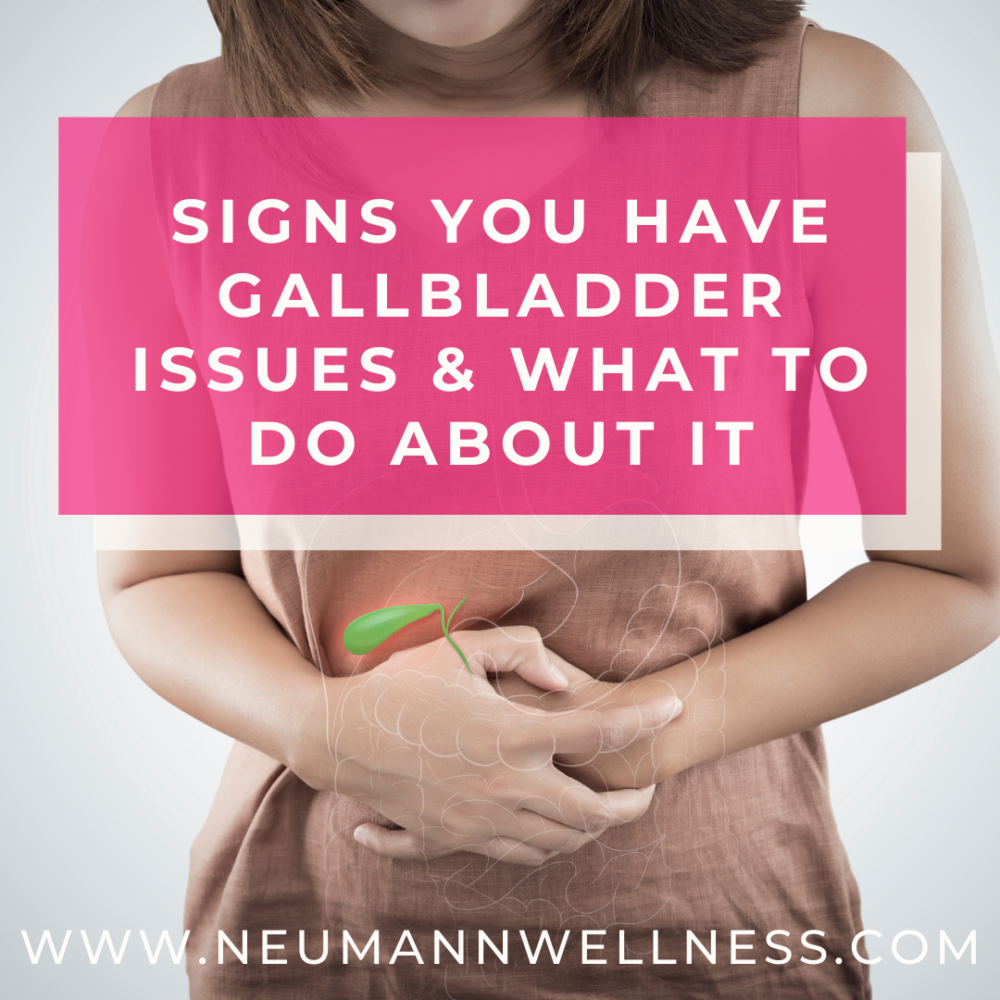
The gallbladder is often taken for granted. Most of you probably aren’t even aware of what the gallbladder does or how it can affect your ability to properly digest foods.
Many times patients come to me thinking they have gallbladder issues but they have no idea what symptoms they should be looking for and how to proceed if they think their gallbladder is, in fact, giving them issues.
Common symptoms of gallbladder issues include:
- upper right abdominal pain (just under your ribcage) after eating fatty foods
- unexplained episodes of upper back pain, especially around the right shoulder blade
- bouts of nausea
- jaundice (yellowing of skin or eyes)
- clay colored stools
- excessive gas + bloating after eating
If you checked most of these off of your list, then read on because gallbladder issues could be to blame.
In this comprehensive article I’ll review:
- How the gallbladder works
- What is bile?
- Types of gallbladder issues
- Risk factors + Signs and symptoms
- How to get properly diagnosed
- Natural tips to combat gallbladder issues
Let’s get to it!
How the Gallbladder Works
The gallbladder is a small, pear shaped, 4 inch sac located just below your liver.
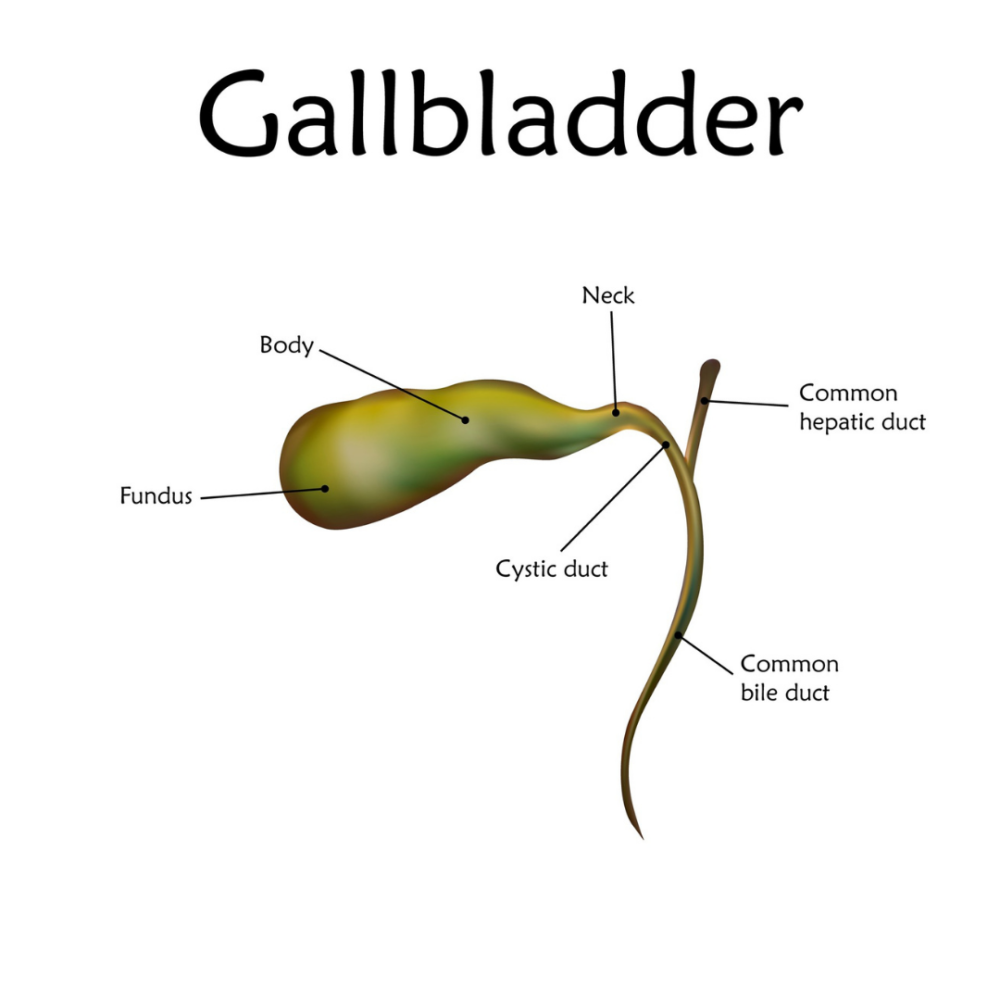
The purpose of the gallbladder is to store bile which is eventually secreted into the small intestine to break down fats into smaller particles so they can be absorbed.
The gallbladder is actually just one part of your biliary tract. The biliary tract refers collectively to the liver + gallbladder + bile ducts which work together, in harmony, to create + store + secrete bile.
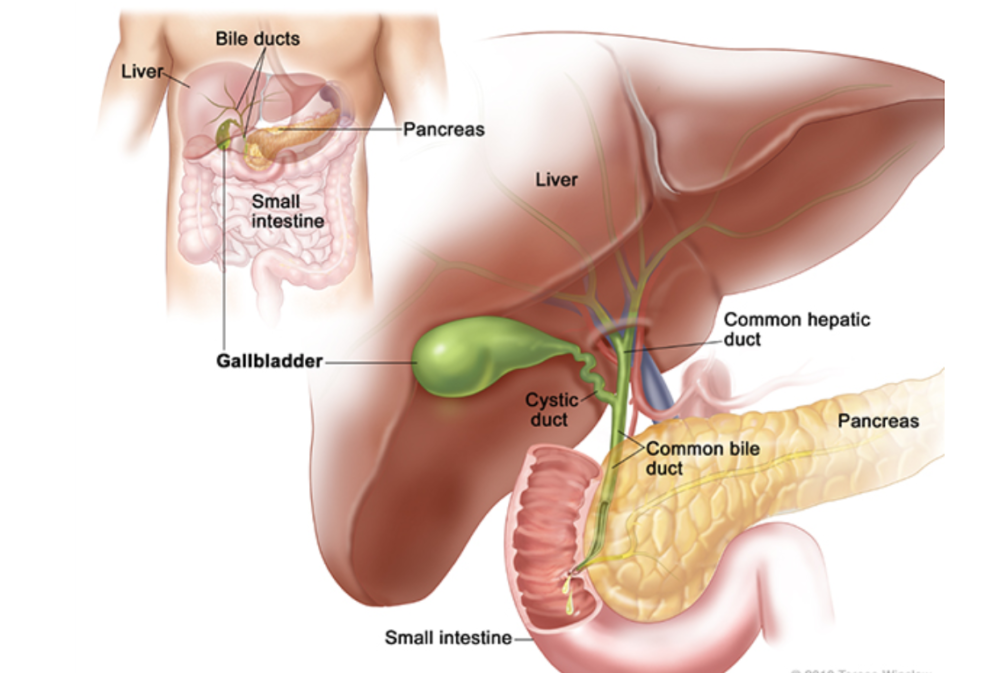
After bile is produced in the liver, the bile travels through the common bile duct to the gallbladder for storage.
When fats enter the small intestine (just after leaving your stomach), your gut cells can sense the presence of fat which stimulates a hormone called cholecystokinin, or CCK, which then stimulates your gallbladder to contract and secrete bile (1).
What is Bile?
As described above, bile helps break down fats into smaller particles so they can be digested appropriately. Bile is made and released by the liver and then stored and concentrated in the gallbladder.
Bile is made up of:
- 97% water
- 0.7% bile salts (with amino acids glycine or taurine attached to it)
- 0.51% fats (cholesterol, fatty acids, lecithin)
- 0.2% bilirubin (formed during normal breakdown of red blood cells)
- Trace amounts of inorganic salts (potassium, sodium, bicarbonate) (2)
If there’s a lack of bile present, then fats become indigestible and are excreted in your poop (this is called steatorrhea). When this happens, your poop will float and appear clay colored & greasy.
The cholesterol contained in bile will occasionally form lumps in the gallbladder, called gallstones, which leads us to our next topic…
Types of Gallbladder Issues
There are several types of gallbladder issues, I’ll outline just a few of the most commonly occurring ones here. It’s important to note that gallstones are often the root-cause to many gallbladder issues.
Gallstones
According to the National Institute of Health, gallstones cause the majority of gallbladder issues.
Most times, people have gallstones without even knowing it because the majority of gallstones don’t cause any symptoms whatsoever. They’re often found by accident when a person gets an ultrasound for a different condition.
Stones formed in the gallbladder are categorized into 2 main types:
- Cholesterol stones – usually yellowish-green and made mostly of hardened cholesterol; about 75% of stones are cholesterol stones
- Pigment stones – are dark in color and made from bilirubin (made from broken down red blood cells), less common
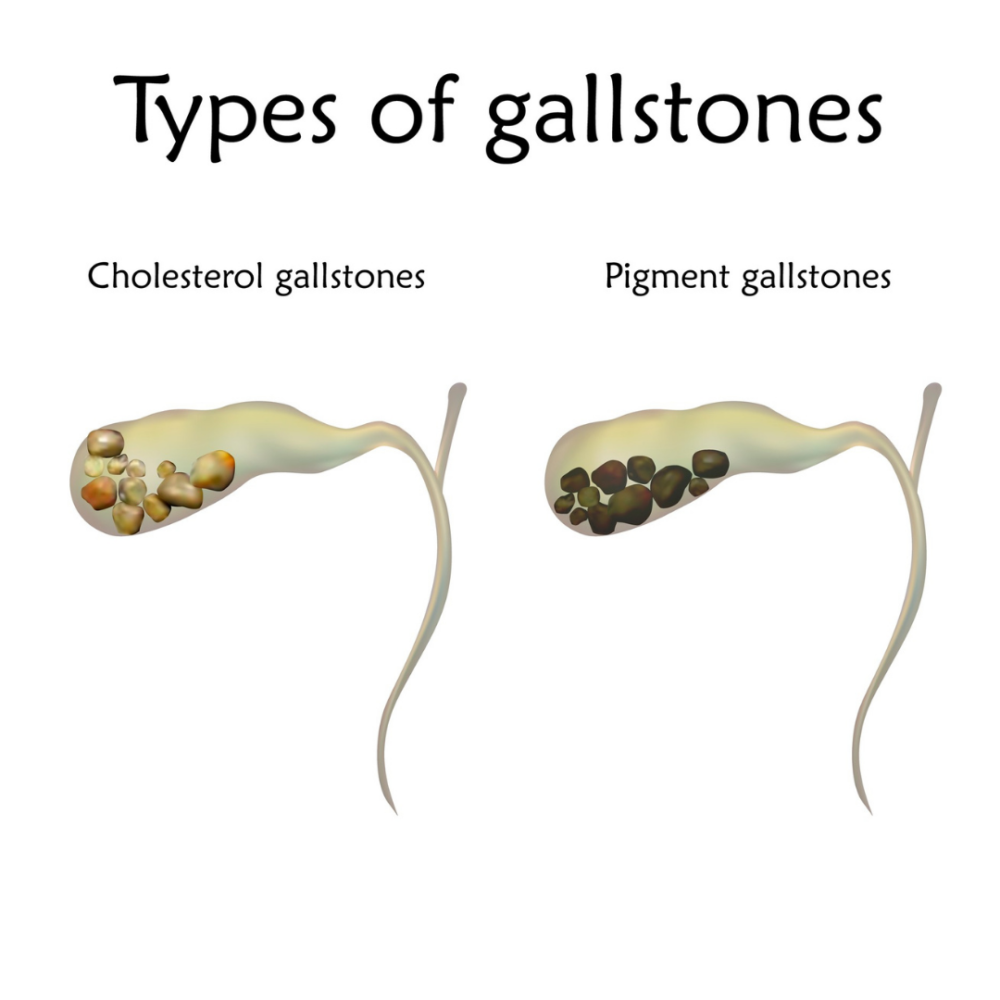
Your gallbladder needs to empty its bile to be healthy and to function properly. If the gallbladder fails to empty its bile content (due to low fat diets and inflammation in the gut caused by food sensitivities) the bile becomes overly concentrated, causing stones to form. (3, 4)
Cholestasis
Cholestasis is a reduction (or cessation) of bile flow. This occurs when the bile from the liver can’t get to your small intestine. The blockage of bile flow can be caused by an infection of the liver or by gallstones. (5)
Cholecystitis
Cholecystitis literally translates to gallbladder inflammation (chole = gall, cyst = bladder, itis = inflammation) and it’s caused when bile gets trapped inside the gallbladder most often due to gallstones. (6)
Cholangitis
Cholangitis literally translates to an inflammation of the bile ducts (cholang = bile duct, itis = inflammation). Cholangitis is a serious infection requiring immediate medical attention. Inflammation of the bile ducts are most commonly linked to a blockage from gallstones. (7)
Gallbladder Polyps
Polyps are abnormal tissue growths and are often found by accident. Polyps are rarely cancerous, with about 95% of gallbladder polyps being benign. Their presence sometimes indicates an underlying gallbladder issue, such as chronic gallbladder inflammation (cholecystitis). (8)
Wrapping it all together
As you can see, most gallbladder issues stem from gallstones getting trapped within the bile ducts preventing bile flow from the liver, through the gallbladder, and into its final destination in the small intestine.
Risk Factors + Signs and Symptoms
Gallbladder issues can manifest in any number of ways and can be acute (come on suddenly) or chronic (cause ongoing issues). There are also a number of risk factors that elevate your chance for gallbladder disease or gallstones.
Signs + Symptoms
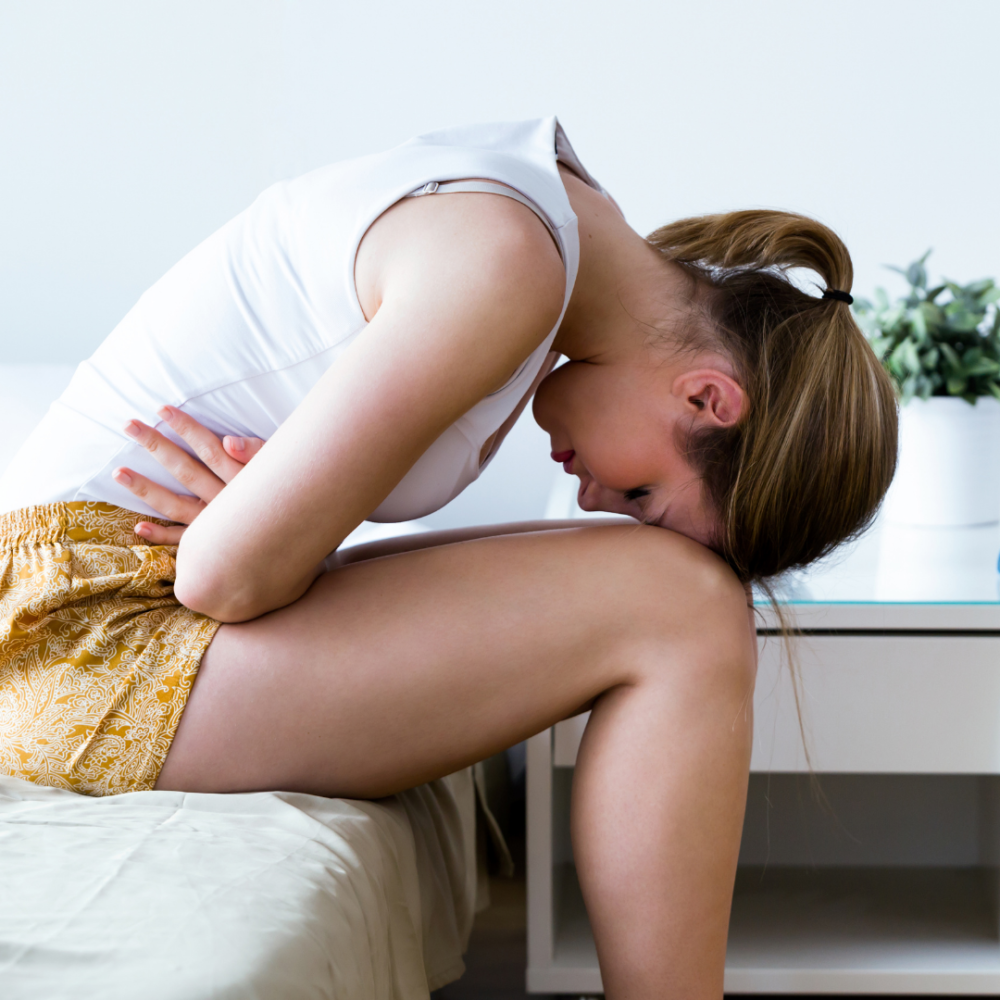
Symptoms can vary depending on which type of gallbladder issues you have, but a common theme is to experience severe pain in the upper right side of your abdomen, under the ribcage (called, biliary colic), which can be accompanied by yellowing of the skin (jaundice), nausea or vomiting, and radiation of pain through the upper back (especially around the right shoulder blade). (9)
Other symptoms include:
- Abdominal pain that is linked to eating a fatty meal
- Intense pain that lasts at least 30 minutes but begins to subside within an hour
- Excessive gas and bloating after eating
- Burping
- Clay colored stools
- Dark urine (10)
Risk Factors
Those who are overweight, female, and over the age of 40 are at highest risk of developing gallbladder issues. In fact, women are twice as likely to develop gallstones than men. (11)
Other risk factors include:
- Women who have extra estrogen in their body due to pregnancy, birth control, or hormone replacement therapy (HRT)
- Having high cholesterol levels
- Having a family history of gallbladder issues
- Rapid weight loss
- Being sedentary
- Diabetes
- Consuming a high fat / low fiber / high sugar diet
- Antibiotic use (12)
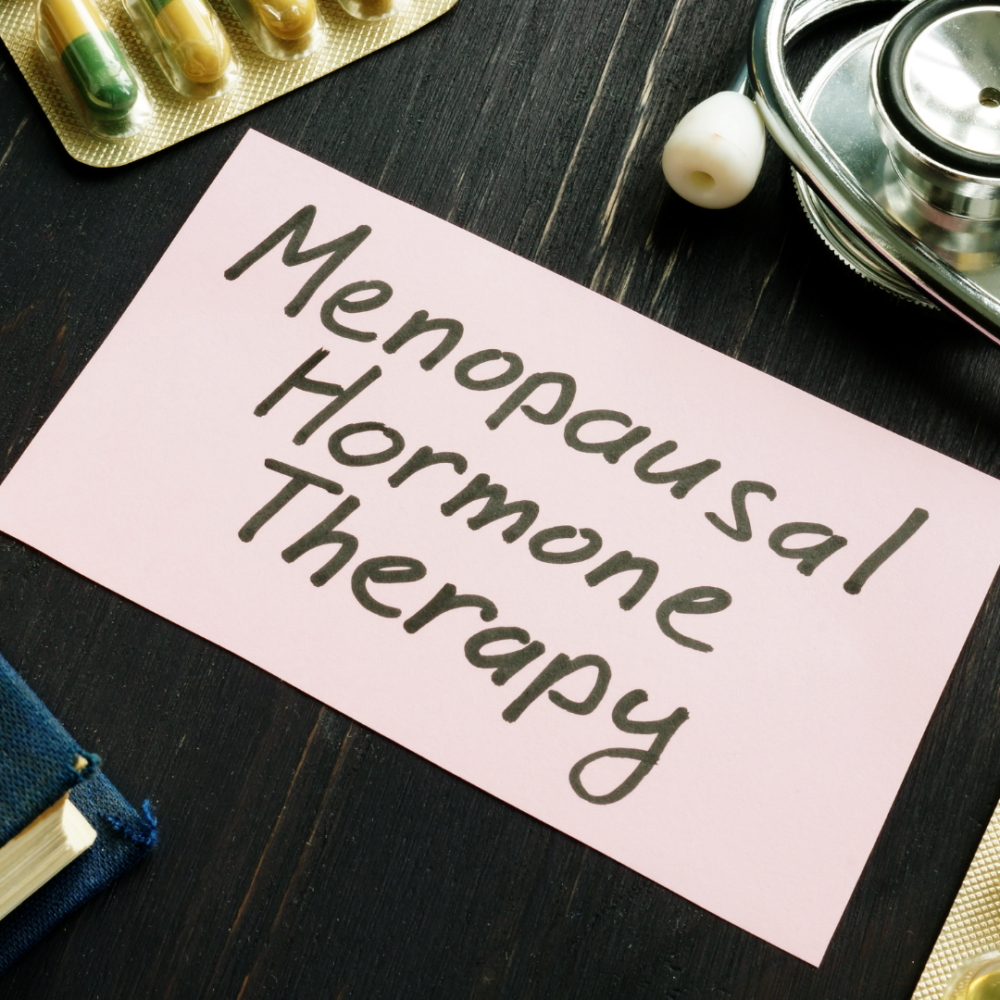
How to Get Properly Diagnosed
There are a number of ways to properly diagnose a gallbladder condition and other lab markers that might point to gallbladder troubles.
Ultrasounds + CT Scans
Ultrasounds + Computerized tomography (CT) scans are also commonly used to get images of your gallbladder to see if there are gallbladder stones.
HIDA Scan
A Hepatobiliary iminodiacetic acid (HIDA) scan is used to capture images of your gallbladder + measure how well your gallbladder ejects bile. This test is useful when ultrasound results are inconclusive. The HIDA test can diagnose if you have gallbladder inflammation (cholecystitis) or bile duct blockages from gallstones. Your doctor will typically recommend gallbladder removal with a gallbladder ejection fraction (GBEF) reading of less than 35%. (13)
MRI + ERCP
Other tests like Magnetic resonance imaging (MRI) + Endoscopic Retrograde CholangioPancreatography (ERCP) use dye to see if there is a blockage in the bile ducts from gallstones. (14) ERCP mainly used to treat patients where a gallstone has blocked the bile duct causing pancreatitis. (15)
Blood Tests
Blood tests can reveal if you have signs of infection + inflammation of the bile ducts and other complications caused from gallstones, these include:
- Liver Panel (AST, ALT, ALP, bilirubin, GGT)
- White blood cell count
- C-Reacitve Protein (CRP)
- Lipase + Amylase (used to determine if gallbladder disease is causing pancreas issues)
Tips to Help With Gallbladder Issues
There are a number of ways to boost your gallbladder health but, of course, if you’re having severe symptoms you’ll want to seek medical attention right away.
For those that have milder cases of gallbladder issues, it might be worth trying a few diet and lifestyle interventions to try and put your issues at bay and attempt to avoid surgical removal of your gallbladder.
I always recommend getting a full medical workup by your doctor if you suspect you have gallbladder issues before moving into addressing any of these suggestions.
Eat more fat
I know so many women who’ve followed the low-fat diet fad for years, unfortunately this is probably the very reason why they’re struggling with gallbladder issues. Even conventional medicine advocates for a low-fat diet for someone struggling with gallbladder issues.
While this may alleviate symptoms over the short term, long-term fat restriction only prevents the stimulation of gallbladder contraction by cholecystokinin (remember, CCK stimulates your gallbladder to secrete bile!). This can lead to a more sluggish gallbladder and increase your risk for gallstones.
If you go for many days without eating much fat, the bile in the gallbladder can stagnate. When bile stagnates, it tends to form a thick sludge first, then “sand,” then “gravel,” and finally coalesces into one solid stone.
It’s important to consider what types of fats you’re including in your diet though. A diet high in healthy unsaturated fats (think avocados, olives, nuts, seeds, fatty fish, etc) may actually protect against gallstone formation. (16)
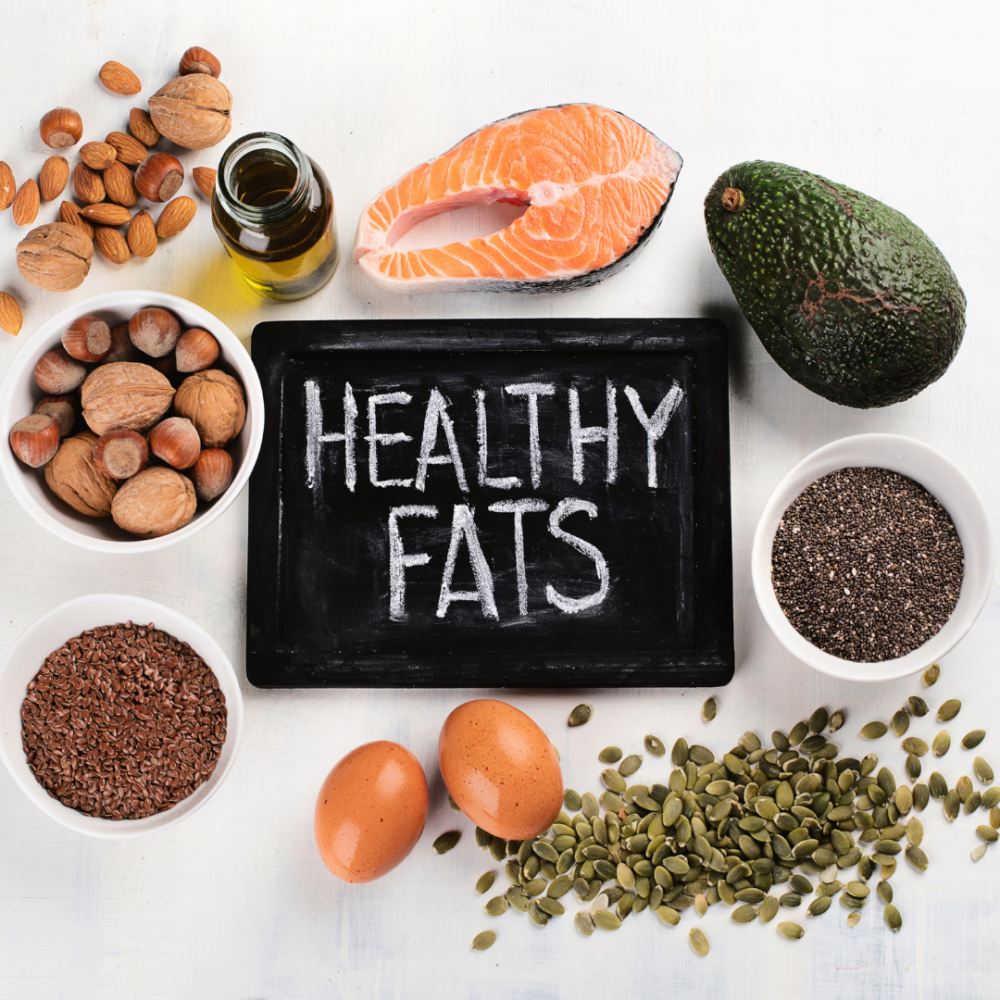
Remove Your Food Sensitivities
Research indicates that food sensitivities can cause damage in the intestinal tract leading to a sluggish gallbladder.
Food sensitivities contain proteins that are capable of exciting immune cells in the intestinal tract, causing inflammation in the intestinal lining, and leading to a reduction in CCK signaling (remember, CCK stimulates your gallbladder to squeeze bile out into the small intestine).
If the intestines are damaged, and CCK secretion is interrupted, the gallbladder never fully contracts to squeeze out all of the bile which can lead to gallstone formation. (17)
The difference between subjects with healthy intestines and those who have damage from consuming gluten (as in celiac’s disease) can be profound.
In one study, people with celiac disease who had intestinal damage from gluten consumption took over 7 times longer to empty out their gallbladder than the normal subjects. (18) Furthermore, people with both celiac and Non-Celiac Gluten Sensitivity (NCGS) are able to normalize the emptying time of their gallbladder by switching to a gluten-free diet. (19, 20)
The same can be said for any food sensitivity. Up to 75% of your immune system resides in your gut. If you’re eating something that’s causing an immune reaction and (therefore damage to your intestinal lining) then your gallbladder isn’t able to function as optimally as it should because CCK signaling has been inhibited. (21)
Food sensitivities are individualized, so what’s triggering one person with gallbladder issues isn’t necessarily going to be your trigger too.
Getting a high quality food sensitivity test could help you identify exactly what’s causing immune triggers in your intestine which is, in turn, leading to your gallbladder troubles.
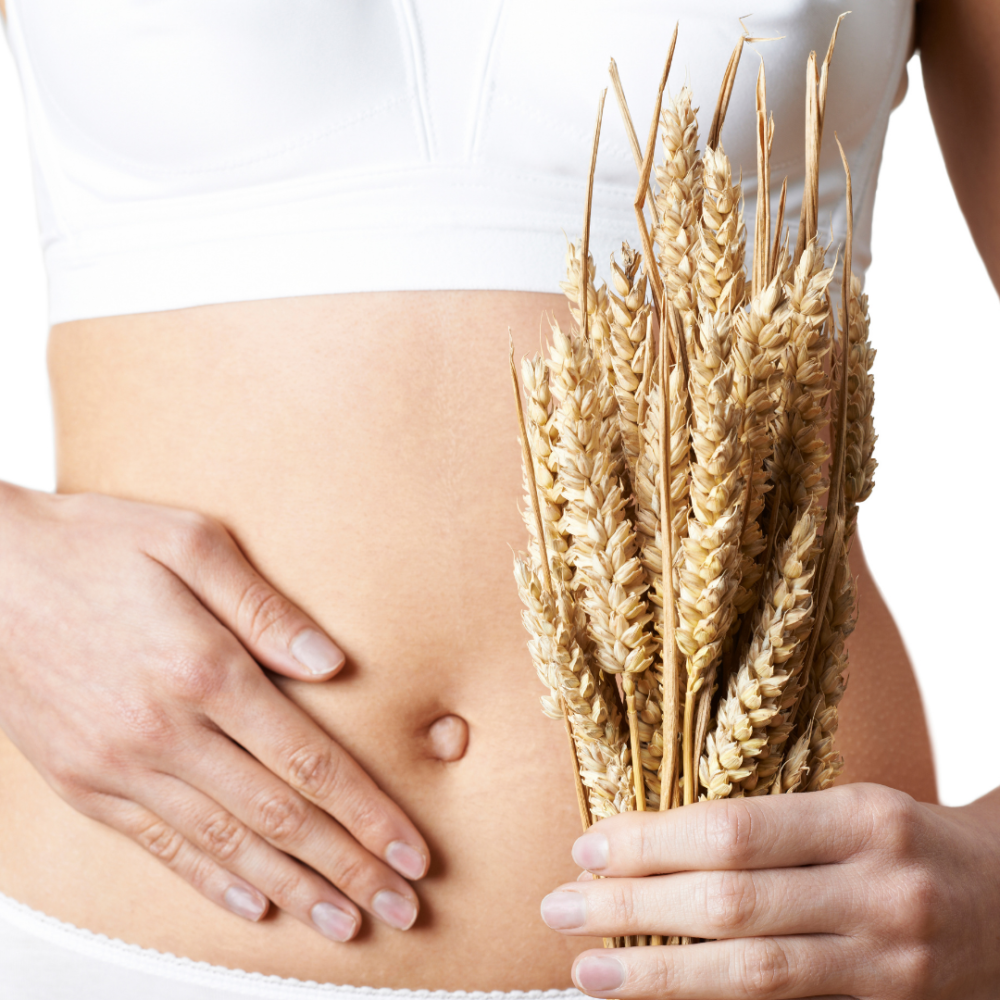
A Word on Gallbladder Flushes
I frequently see many natural health websites promoting gallbladder flushes. These flushes have yet to be tested in clinical trials and there isn’t enough scientific evidence to yet support them.
Gallbladder flushes can be potentially dangerous. Your energy is better spent focusing on underlying causes instead of a “quick fix” that doesn’t have any science yet to back it up! (22)
Micronutrients That May Boost Gallbladder Health
Believe it or not, micronutrient testing can give you a targeted approach to optimizing your gallbladder health. Let’s look at a couple of key nutrients that need to be optimized for proper gallbladder functioning.
Vitamin C
It’s been noted that those with a vitamin C deficiency are more prone to developing gallstones. Vitamin C helps breakdown cholesterol (remember that the most common type of gallstone is cholesterol-based). One study even showed that vitamin C could cut your risk for developing gallstones in half. (23, 24, 25)
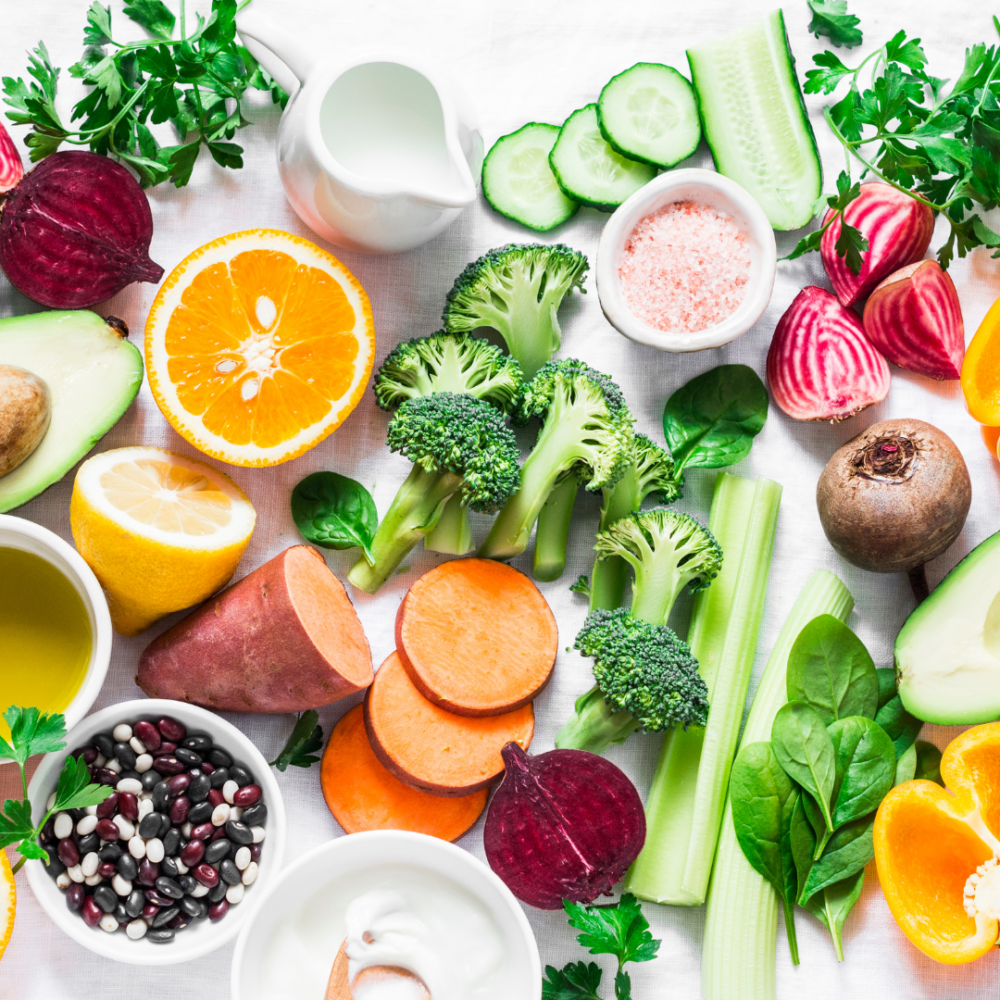
Choline
Choline helps facilitate the production of phosphatidylcholine (a phospholipid attached to a choline particle), which is a major component of bile. (26, 27)
Phosphatidylcholine (found most abundantly in lecithin), in particular, has been suggested to help break up cholesterol-based gallstones. (28, 29, 30)
The richest sources of choline include animal products like egg yolks, red meat, liver, chicken, milk, yogurt, fish. To a lesser extent it’s also in a few plant sources like shiitake mushrooms, legumes, and cruciferous vegetables (broccoli, cauliflower, brussel sprouts and cabbage). (31)
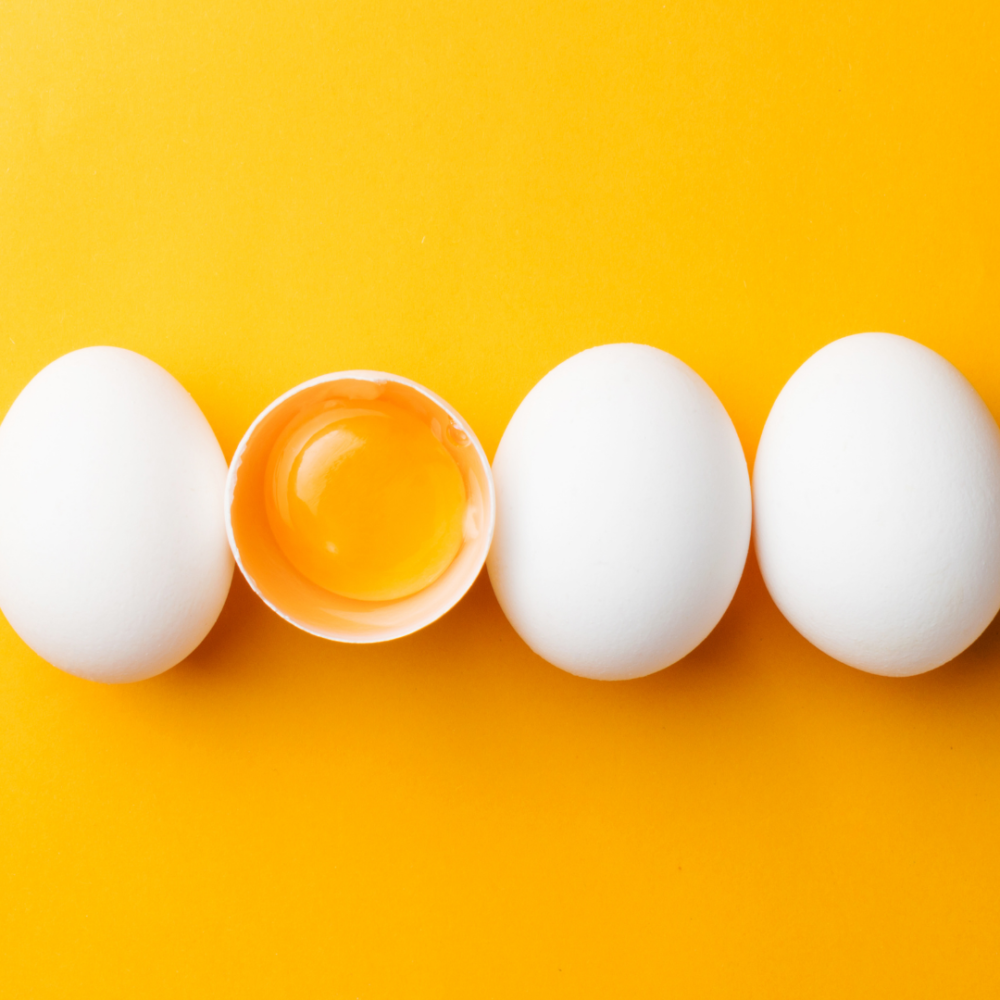
I’m careful to recommend choline supplementation because any leftover choline that doesn’t get absorbed into your body can be eaten up by your gut microbes and produce a potentially harmful substance, called TMAO, which is theorized to be harmful to organs like the heart and kidneys. (32)
It’s been suggested that betaine trimethylglycine (TMG) could be a safer choline supplemental alternative for those at risk of developing elevated TMAO levels. (33)
Putting it all together
You’ve learned that most gallbladder issues stem from the development of gallstones and how diet and micronutrient strategies can help optimize your gallbladder health.
If you’re struggling with abdominal pain after eating fatty meals, unexplained episodes of upper back pain, nausea, clay colored stools, and excessive gas + bloating after eating, then you’ll want to have a full work up by your doctor to rule out gallbladder issues.
Working with a gut health nutritionist in conjunction with your doctor can boost your chances of avoiding surgery for gallbladder removal.
If you’ve got gallbladder and digestive issues, I can help. Book a free call with me to get started on your ultimate digestive healing journey!
